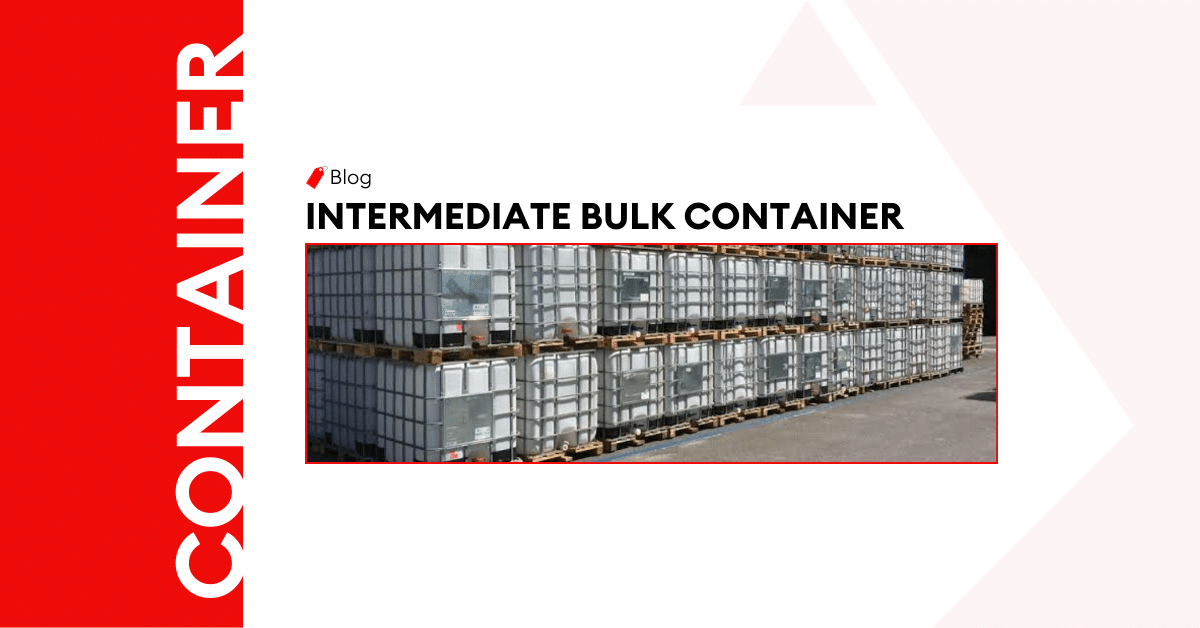
Intermediate Bulk Container: A Dept Guide To Types, Dimension & Specifications
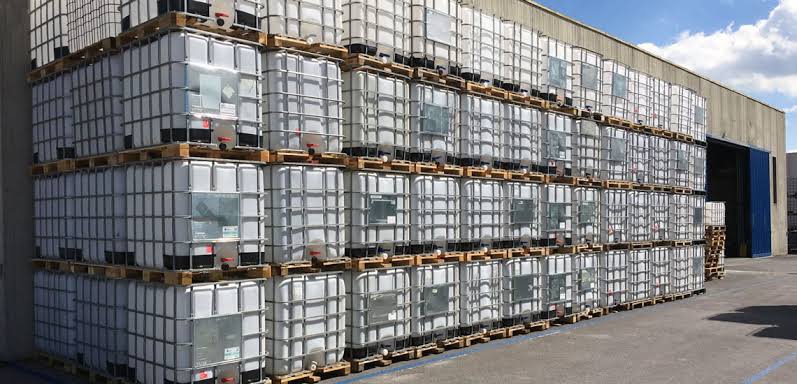
Introduction
Intermediate Bulk Containers (IBCs) have revolutionized the transportation of liquids, granules, and powders across the globe. With the UAE’s stringent measures regarding product handling and safety, IBCs are vital in global shipping. Let’s explore these containers in detail, including the benefits and IBC specifications.
What is an Intermediate Bulk Container?
Definition and Purpose of Intermediate Bulk Container
Intermediate Bulk Containers (IBCs) are large, reusable industrial containers designed to transport and store liquids, granules, and powders.
Differentiating Intermediate Bulk Container from Other Container Types
- IBCs typically have a larger capacity than standard shipping containers.
- IBCs have a lightweight yet robust frame.
- IBCs are designed for multiple uses.
- IBCs often have integrated pallet base, and can be lifted from multiple sides by forklifts.
- IBCs are less versatile than regular shipping containers.
5 Key Features and Components of Intermediate Bulk Container
- Container structure consists of high-density polyethylene (HDPE) or stainless steel
- Capacities range from 200 to 3000 liters
- Integrated pallet bases
- Valve and discharge outlets
- Tamper-resistant lids and closures
- Container labels and markings
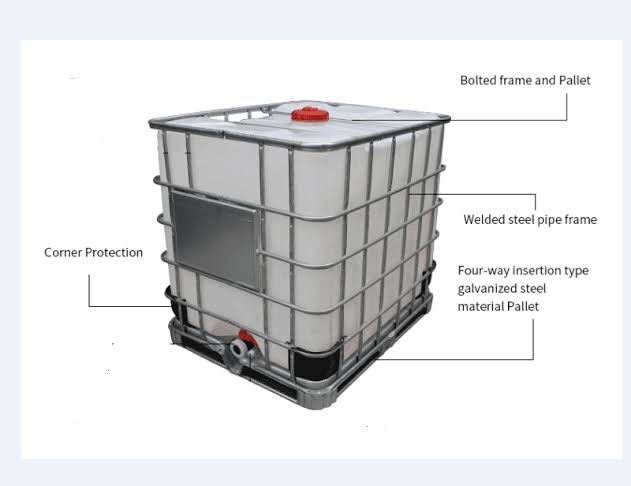
The Benefits of Using an Intermediate Bulk Container
Efficient Storage and Transportation of Bulk Liquids/Solids
Storage of liquids in intermediate bulk containers is what makes it one of the most unique options for businesses. IBCs can hold significant volumes, minimizing the need for multiple smaller containers. The stackable design and secure lids enhance efficient, intermodal logistics.
Versatility for Different Types of Bulk Cargo
Whether it’s liquids, grains, powders, or even semi-solid materials, IBCs accommodate a wide range of products across various industries.
Enhanced Safety and Handling
Intermediate Bulk Containers (IBCs) eliminate the need for multiple smaller containers, cutting down on packaging and handling costs. The stackable design also optimizes the use of warehouse facilities and lowers long-term packaging expenses.
Cost-Effective Solution for Bulk Shipments
Intermediate Bulk Containers (IBCs) eliminate the need for multiple smaller containers, cutting down on packaging and handling costs. The stackable design also optimizes the use of warehouse facilities and lowers long-term packaging expenses.
Compliant with Shipping and Environmental Regulations
Many IBCs carry UN/DOT certification, implying adherence to stringent international standards for the safely transporting hazardous materials. With less risks of leaks and spills, environmental contamination is contained during shipping and storage.
For logistics professionals in the UAE, staying informed about the significance of pallet wide containers is not just an advantage but a necessity. Let’s explore these hauling units in detail.
Stackable and Space-Efficient Design
Intermediate Bulk Containers (IBCs) boast a space-efficient design, with their sturdy construction ensuring multiple IBCs can be safely stacked on top of each other, maximizing vertical space utilization.
Reusable and Environmentally Friendly
By eliminating the constant need for disposal and replacement, IBCs significantly lower the environmental impact associated with conventional packaging.
Reduces Waste and Packaging Costs
The durable construction and reusability of IBCs serve to significantly lower disposal and replacement expenses. So, these containers eliminate the need for excess packaging materials and reduce packaging costs.
Customizable Options for Specific Cargo Requirements
When opting for an Intermediate bulk container, there are available in diverse sizes, capacities, and designs, allowing for precise matching to different product volumes and transportation demands.
Facilitates Intermodal Transportation
The standardized dimensions ensure compatibility across different modes of transport, including road, rail, and sea. IBCs’ robust construction and secure closures guarantee product integrity during transfers between different carriers, reducing potential damage or contamination.
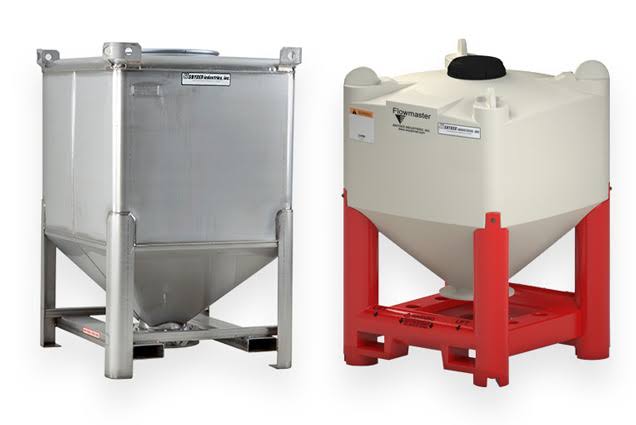
What are the Different Dimensions of Intermediate Bulk Containers?
Overview of Intermediate Bulk Container Dimensions
The standard sizes of Intermediate Bulk Containers (IBCs) are commonly available in two main variants: 275 gallons (approximately 1040 liters) and 330 gallons (approximately 1250 liters) for liquid storage.
Internal and External Dimensions of Intermediate Bulk Container
The general IBC dimensions are:
Internal Dimensions of Standard 275-Gallon IBC
Length | Width | Height |
47 inches (119.4 cm) | 40 inches (101.6 cm) | 36 inches (91.4 cm) |
External Dimensions of Standard 275-Gallon IBC
Length | Width | Height |
48 inches (121.9 cm) | 45 inches (114.3 cm) | 46 inches (116.8 cm) |
Internal Dimensions of Standard 330-Gallon IBC
Length | Width | Height |
48 inches (121.9 cm) | 42 inches (106.7 cm) | 36 inches (91.4 cm) |
External Dimensions of Standard 330-Gallon IBC
Length | Width | Height |
48 inches (121.9 cm) | 47 inches (119.4 cm) | 53 inches (134.6 cm) |
Other IBC sizes are available with different dimensions to cater to specific cargo requirements, and depending on the manufacturer and the design of the IBC.
Load Capacity and Weight Restrictions
The load capacity varies depending on the size and material used in their construction. Generally, IBCs have load capacities ranging from 800 kilograms to 1500 kilograms for liquids and up to 2000 kilograms for solids.
Get In Touch
Characteristics of Intermediate Bulk Container
Unique Design Features and Construction of Intermediate Bulk Container
- An integrated pallet base enabling easy handling with forklifts or pallet jacks.
- Construction from durable materials like high-density polyethylene or stainless steel.
- Valves or discharge outlets for controlled and efficient dispensing of contents.
- Secure lids and closures ensuring a tamper-resistant seal.
- Wide openings on the top for easy filling and venting during loading and unloading.
- Labels and markings showing content details, handling instructions, and safety precautions.
Flooring and Load Securing Mechanisms
The flooring of stainless-steel intermediate bulk container is typically sturdy and capable of supporting the cargo weight without deformation. Also, they often feature secure tie-down points or anchor points for strapping and securing of the cargo.
Structural Strength and Durability
The materials used in making IBCs are resistant to impacts, corrosion, and harsh environmental conditions. Additionally, the seamless construction of IBCs ensures leak-proof and tamper-resistant designs. The integrated pallet bases provide stable and secure handling during forklift operations.
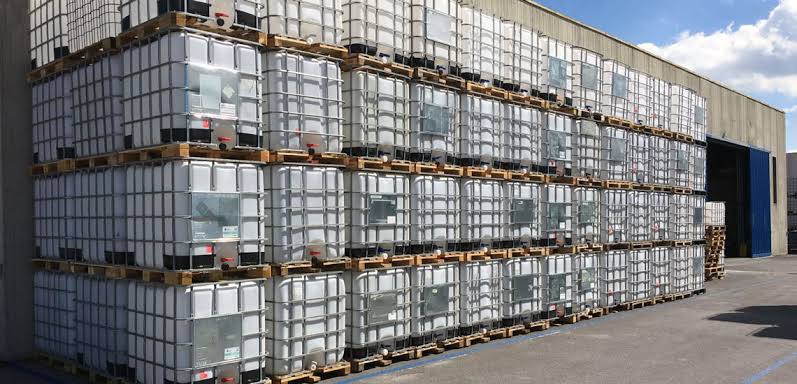
The Most Common Applications of Intermediate Bulk Container
Overview of Industries and Cargo Types That Utilize Intermediate Bulk Containers
IBCs are commonly used for transporting and storing hazardous and non-hazardous chemicals, food-grade liquids, sensitive pharmaceutical products, agricultural chemicals, fertilizers, crop protection agents, cosmetic ingredients, and automotive fluids.
Examples of Specific Goods Transported Using Intermediate Bulk Container
- Fruit juices
- Hazardous and non-hazardous chemicals, including industrial chemicals and solvents
- Food ingredients, such as edible oils, syrups, and liquid sweeteners
- Sensitive pharmaceutical products
- Industrial adhesives, sealants, and coatings
- Automotive lubricants and oils
- Liquid dairy products, such as milk and cream
- Liquid paint, coatings, and dyes
- Agricultural chemicals and fertilizers
- Cleaning agents, sanitizers, and disinfectants
How Al Sharqi Can Help with Intermediate Bulk Container Shipping
Al Sharqi delivers expertise in handling IBCs for transporting cargo. Our extensive network coverage for domestic and international shipping ensures seamless deliveries within and outside the UAE. We also provide transparent and efficient shipping by employing up-to-date technologies. Ultimately, our regulatory compliance and innovative solutions make us a reliable partner for businesses requiring Intermediate Bulk Container shipping services.
Conclusion
Intermediate bulk containers are a cost-effective and environmentally friendly choice for transporting bulk cargo. So, understanding IBC specifications and usage means that shipping experts can utilize them to unlock the benefits of efficient storage, intermodal transportation, and reduced waste. Harness the uniqueness of IBCs to revolutionize logistics and elevate your businesses to new levels today.
FAQs
Our experience in the field and our global network
An intermediate bulk container (IBC) transports and stores bulk liquids, granules, and powders, provides a secure and stackable vessel with large capacities, and reduces the need for multiple smaller containers.
Intermediate Bulk Containers (IBCs) come in various sizes, but the most common sizes are typically 275 gallons (1040 liters) and 330 gallons (1250 liters) for liquid storage.
The main components of an IBC include a sturdy construction, integrated pallet base or forklift pockets, secure lid or closure, and valve systems or discharge outlets.
IBC tank stands for “Intermediate Bulk Container” tank. It refers to a large, reusable industrial container designed to transport and store bulk liquids, granules, and powders.
IBC storage sizes typically vary, ranging from 200 to 3000 liters, but are available in different volumes to accommodate various cargo quantities and shipping requirements.
Related Articles
Who Is Responsible for Demurrage Charges?
When it comes to shipping, people dealing in the trade at times may get charged with unexpected bill
What Is the Difference Between Detention and Demurrage?
Every step in the logistics operations is carried out according to proper agreements and contracts.
The Ultimate Guide to Dry Container {Types, Dimensions & Specifications}
Introduction In the vast ocean of international trade, about 90 percent of cargo transport relies on




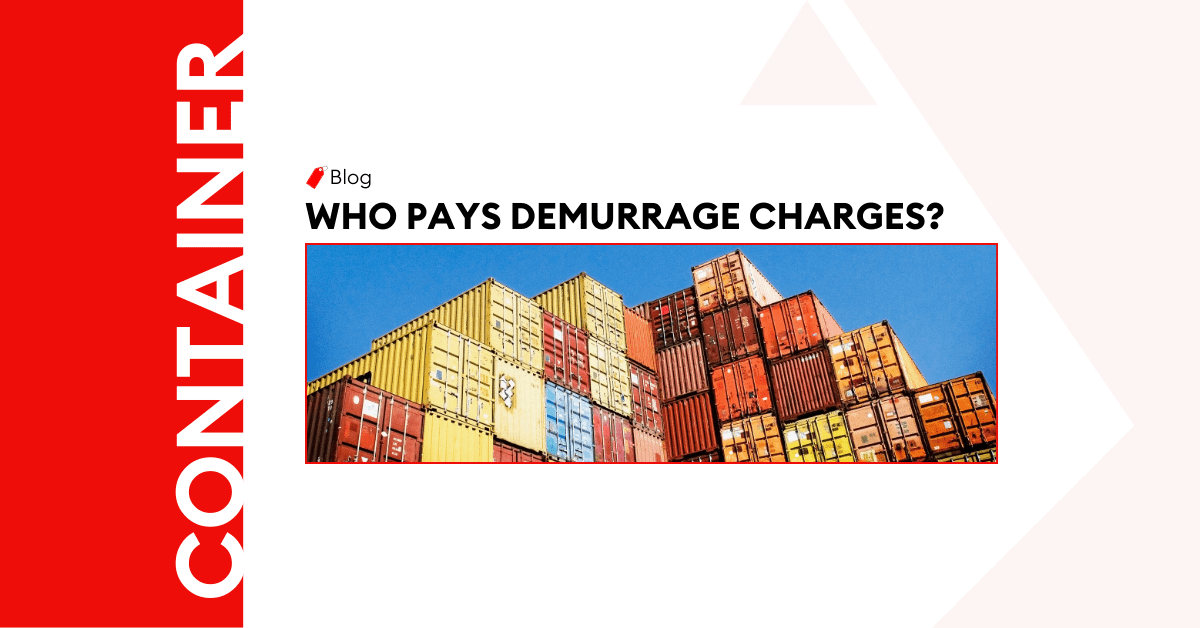
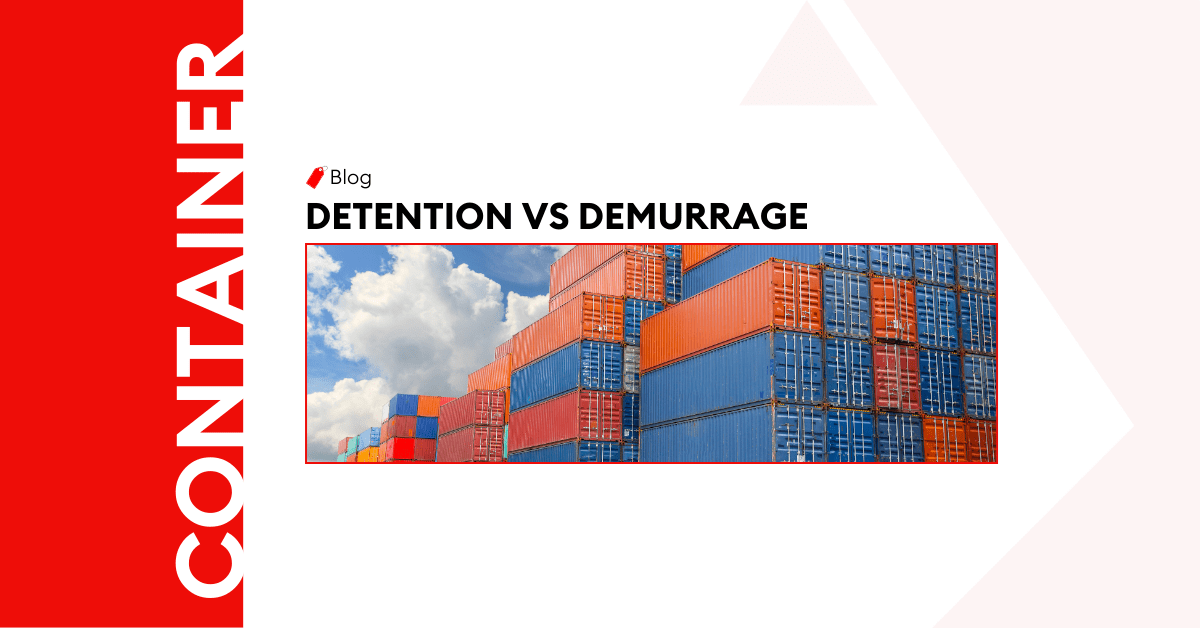
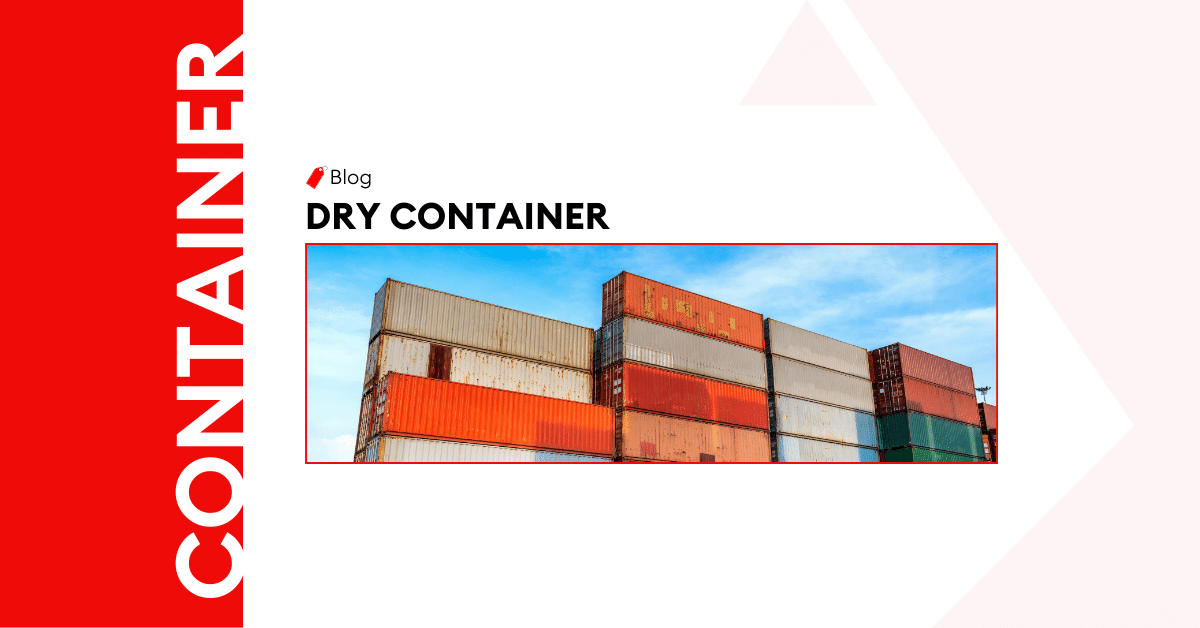
Post a comment
You must be logged in to post a comment.